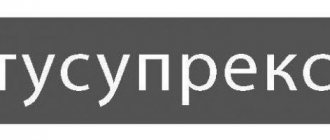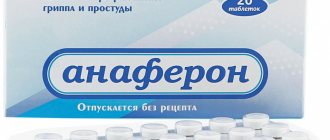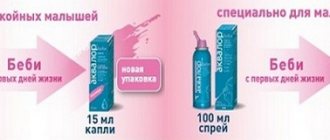Pharmacological properties
Pharmacodynamics.
amoxicillin is a broad-spectrum bactericidal antibiotic from the group of semisynthetic penicillins. inhibits bacterial cell wall synthesis. amoxicillin is inactive against microorganisms that produce beta-lactamases. The level of resistance of susceptible microorganisms may vary depending on the region. The following types of microorganisms are sensitive to the drug: gram-positive aerobes: Enterococcus faecalis, Listeria monocytogenes, beta-hemolytic streptococci (groups A, B, C, G) - Streptococcus agalactiae, Streptococcus bovis, Streptococcus pyogenes; gram-negative aerobes: Helicobacter pylori; anaerobes: Peptostreptococci; others: Borrelia.
Variably susceptible (acquired resistance may be a problem): Enterococcus faecium, Streptococcus pneumoniae, Streptococcus viridans, Escherichia coli, Haemophilus influenzae, Haemophilus parainfluenzae, Moraxella catarrhalis, Proteus mirabilis, Salmonella spp., Prevotella, Clostridium spp., Fusobacterium spp.
The following species are resistant: Staphylococcus aureus, Acinetobacter, Citrobacter, Enterobacter, Klebsiella, Legionella, Morganella morganii, Proteus vulgaris, Providencia, Pseudomonas, Serratia, Bacteroides fragilis, Chlamydia, Mycoplasma, Rickettsia.
Pharmacokinetics. Suction. The bioavailability of amoxicillin depends on the dose and ranges from 75–90%. At doses of 250–1000 mg, bioavailability (AUC and Cmax parameters) is linearly proportional to the dose. At higher doses, the degree of absorption decreases. Food intake has virtually no effect on the absorption of the drug. After taking a single dose of 500 mg, the concentration of amoxicillin in the blood plasma is 6–11 mg/l. Cmax in blood plasma is reached within 1–2 hours.
Distribution. About 17% of amoxicillin is bound to plasma proteins. Therapeutic concentrations are quickly achieved in blood plasma, lungs, bronchial secretions, middle ear fluid, bile and urine. The concentration of the drug in bile exceeds its concentration in the blood by 2–4 times. Amoxicillin penetrates poorly into the CSF; however, with inflammation of the meninges (for example, meningitis), the concentration in the CSF is about 20% of the concentration in the blood plasma.
Metabolism. Amoxicillin is partially metabolized; most of its metabolites are inactive.
Excretion. Amoxicillin is excreted primarily by the kidneys. About 60–80% of the dose taken is eliminated unchanged after 6 hours. T½ of the drug is 1–1.5 hours. If renal function is impaired, T½ of the drug increases and reaches 8.5 hours with anuria.
T½ of the drug does not change with impaired liver function.
Contraindications
Antibiotics should not be taken for the following diseases and conditions:
- high sensitivity to the components of the product, as well as to cephalosporins and beta-lactam antibiotics;
- children under 10 years of age (tablets);
- Infectious mononucleosis;
- epilepsy;
- acute lymphocytic leukemia ;
- severe gastrointestinal infections, which include diarrhea and vomiting;
- allergic diathesis;
- bronchial asthma;
- respiratory viral infections;
- hay fever.
The drug is prescribed with caution to people with meningitis and impaired renal function.
Indications
Amoxicillin is intended to treat the following infections:
- acute bacterial sinusitis;
- acute otitis media;
- acute streptococcal tonsillitis and pharyngitis;
- exacerbation of chronic bronchitis;
- community-acquired pneumonia;
- acute cystitis;
- asymptomatic bacteriuria during pregnancy;
- acute pyelonephritis;
- typhoid and paratyphoid fever;
- dental abscesses with widespread cellulite;
- infections of prosthetic joints;
- eradication of Helicobacter pylori (as part of combination therapy);
- Lyme disease.
The drug is used for the treatment and prevention of endocarditis.
Side effects
Ospamox 250 suspension, 500 mg tablets and Ospamox 1000 mg are generally well tolerated by patients. But sometimes during the treatment the development of such negative effects was noted:
- Gastrointestinal tract: nausea, anorexia , vomiting, abdominal pain, flatulence , stool disorders, feeling of dry mouth; change in taste, temporary discoloration of the tongue in a black tint, change in the color of teeth - in isolated cases.
- Central nervous system, peripheral nervous system : dizziness , hyperkinesia , fainting; People with kidney disease may experience seizures.
- Liver and kidneys: temporary changes in the activity of liver transaminases, interstitial nephritis .
- Allergies: itching, rash, urticaria , exanthema , erythema multiforme , dermatitis ; Stevens-Johnson syndrome , anaphylactic shock , Quincke's edema , toxic epidermal necrolysis may develop .
- Hematopoiesis: agranulocytosis , thrombocytopenia .
- Other manifestations: superinfection, fever , fungal infections of the mucous membranes, in particular candidiasis .
If side effects develop, you need to stop treatment and consult a specialist.
Application
The dose of amoxicillin is determined by the doctor depending on the age, body weight and kidney condition of the patient, as well as the sensitivity of microorganisms and the localization of the infectious process.
Adults and children weighing ≥40 kg
| Indications * | Dose * |
| Acute bacterial sinusitis | 250–500 mg every 8 hours or 750 mg – up to 1 g every 12 hours |
| Asymptomatic bacteriuria during pregnancy | |
| Acute pyelonephritis | In case of severe infections: 750 mg - up to 1 g every 8 hours. For acute cystitis, 3 g can be prescribed 2 times a day for 1 day |
| Dental abscess with extensive cellulite | |
| Acute cystitis | |
| Acute otitis media | 500 mg every 8 hours or 750 mg - up to 1 g every 12 hours. In case of severe infections - 750 mg - 1 g every 8 hours for 10 days |
| Acute streptococcal tonsillitis and pharyngitis | |
| Exacerbation of chronic bronchitis | |
| Community-acquired pneumonia | 500 mg – up to 1 g every 8 hours |
| Typhoid and paratyphoid fever | 500 mg – up to 2 g every 8 hours |
| Infections of prosthetic joints | 500 mg – up to 1 g every 8 hours |
| Prevention of endocarditis | 2 g orally once 30–60 minutes before the procedure |
| Eradication of Helicobacter pylori as part of combination therapy | 750 mg–1 g twice daily in combination with a proton pump inhibitor (eg, omeprazole, lansoprazole) and another antibiotic (eg, clarithromycin, metronidazole) for 7 days |
| Lyme disease | The initial stage is 500 mg–1 g every 8 hours, the maximum dose is 4 g/day in several doses for 14 days (the course of treatment can last from 10 to 21 days). Late stage (systemic lesions) - 500 mg-2 g every 8 hours, maximum dose - 6 g / day in divided doses for 10-30 days |
*Official guidelines for appropriate treatment for each indication should be considered.
Children weighing 40 kg
| Indications* | Dose* |
| Acute bacterial sinusitis | From 20 to 90 mg/kg/day in several doses** (do not exceed the dose of 3 g/day). Typically, children aged 1–3 years are prescribed 250 mg 2 times a day or 125 mg 3 times a day. Children aged 3–12 years: 250 mg 3 times a day. Attention! Exact daily doses are calculated according to the child's body weight, not his age |
| Acute otitis media | |
| Community-acquired pneumonia | |
| Acute sinusitis | |
| Acute pyelonephritis | |
| Dental abscess with widespread cellulite | |
| Acute streptococcal tonsillitis and pharyngitis | From 40 to 90 mg/kg/day in several doses** (do not exceed the dose of 3 g/day) |
| Typhoid and paratyphoid fever | 100 mg/kg/day in 3 divided doses |
| Prevention of endocarditis | 50 mg/kg body weight orally once 30–60 minutes before the procedure |
| Lyme disease | Initial stage - 25-50 mg/kg/day in 3 divided doses for 10-21 days Late stage (systemic lesions) - 100 mg/kg/day in 3 divided doses for 10-30 days |
*Official guidelines for appropriate treatment for each indication should be considered.
**The daily dose of the drug is recommended to be divided into 2 doses if it approaches the maximum recommended.
Duration of use. For mild to moderate infections, take the drug for 5–7 days. However, if the infections are caused by streptococcus, the duration of treatment should be at least 10 days.
In the case of chronic diseases, local infectious lesions, severe infections, the duration of treatment is determined by clinical
Product description certified by the manufacturer Sandoz
.
Verified
Sevryukov Alexander Viktorovich
Compound
Ospamox capsules contain the active ingredient amoxicillin (250 mg).
The tablets contain the active ingredient amoxicillin (500 mg or 1000 mg). As auxiliary elements, the product contains polyvidone, magnesium stearate, sodium starch glycolate, talc, MCC, titanium dioxide, methylhydroxypropyl cellulose.
Ospamox granules contain the active ingredient amoxicillin (125 mg or 250 mg). As excipients, the composition contains sodium saccharin, simethicone, trisodium citrate anhydrous, guarana (gum), sodium benzoate, sucrose, flavoring.
Note!
Description of the drug Ospamox table. p/o 1000 mg No. 12 on this page is a simplified author’s version of the apteka911 website, created on the basis of the instructions for use.
Before purchasing or using the drug, you should consult your doctor and read the manufacturer's original instructions (attached to each package of the drug). Information about the drug is provided for informational purposes only and should not be used as a guide to self-medication. Only a doctor can decide to prescribe the drug, as well as determine the dose and methods of its use.
Overdose
If Ospamox was taken in large doses, a person may develop nausea, stool disorders, vomiting and, as a result, disturbances in the water-salt balance in the body. There is no specific antidote. In case of overdose, the patient’s stomach should be rinsed, saline laxatives and enterosorbents should be given. If the water-salt balance is disrupted, measures must be taken to restore the balance of electrolytes and water. The active component Ospamox is eliminated by hemodialysis .
Ospamox price, where to buy
The price of Ospamox in Ukraine is from 70 UAH. (tablets) and from 80 UAH. (granules).
- Online pharmacies in UkraineUkraine
- Online pharmacies in KazakhstanKazakhstan
Pharmacy24
- Ospamox 500 mg/5 ml 12 g 60 ml powder Sandoz GmbH, Austria
155 UAH.order - Ospamox DT 1000 mg No. 12 tablets Sandoz GmbH-TechOps, Austria
100 UAH order
- Ospamox 500 mg N12 tablets Sandoz GmbH, Austria
88 UAH order
- Ospamox DT 500 mg No. 12 tablets Sandoz GmbH, Austria
64 UAH order
- Ospamox 1000 mg No. 12 tablets Sandoz GmbH-TechOps, Austria
117 UAH. order
PaniPharmacy
- Ospamox liquid Ospamox powder for the preparation of 60 ml suspension 500 mg/5 ml in bottle No. 1 Austria, Sandoz
163 UAH order
- Ospamox DT tablets Ospamox DT tablets. 1000 mg No. 12 Austria, Sandoz
117 UAH. order
- Ospamox tablets Ospamox tablets 1000 mg No. 12 Austria, Sandoz
132 UAH order
- Ospamox tablets Ospamox tablets 500 mg No. 12 Austria, Sandoz
89 UAH order
- Ospamox DT tablets Ospamox DT tablets. 500 mg No. 12 Austria, Sandoz
77 UAH order
show more
special instructions
Before starting treatment, a high sensitivity reaction test to penicillins and cephalosporins .
People with a history of severe allergies may develop severe reactions. The possible need to eliminate an anaphylactic reaction should be taken into account.
People suffering from severe gastrointestinal disorders accompanied by vomiting and diarrhea should not take Ospamox orally, as the risk of absorption is reduced.
It should be borne in mind that in people suffering from kidney disease, the elimination of amoxicillin is slowed down. In this case, you need to stop therapy or reduce the dose of the medication.
With long-term treatment, excessive proliferation of yeast or resistant microorganisms may occur. There is a possibility of developing superinfection.
When treating with large doses of Ospamox, you need to drink a lot of fluid to prevent crystalluria. If there are large concentrations of amoxicillin in the urine, sediment may form in the urinary catheter. It is important to check the catheter periodically.
When taking large doses, it is important to constantly monitor laboratory blood values. In people with epilepsy or kidney failure, large doses of the medicine may cause seizures.
Ospamox suspension contains sodium citrate and , this is important to take into account for patients who follow a sodium-restricted diet.
Care must be taken when driving vehicles and working with dangerous devices until the individual reaction to the drug is established.
Nosological classification (ICD-10)
- A01.0 Typhoid fever
- A01.4 Paratyphoid fever, unspecified
- A03 Shigellosis
- A09 Diarrhea and gastroenteritis of presumably infectious origin (dysentery, bacterial diarrhea)
- A27.0 Leptospirosis, icteric-hemorrhagic
- A27.9 Leptospirosis, unspecified
- A32.9 Listeriosis, unspecified
- A37 Whooping cough
- A39 Meningococcal infection
- A41.9 Septicemia, unspecified
- A54 Gonococcal infection
- G00 Bacterial meningitis, not elsewhere classified
- H66 Suppurative and unspecified otitis media
- I33 Acute and subacute endocarditis
- J02.9 Acute pharyngitis, unspecified
- J04 Acute laryngitis and tracheitis
- J06 Acute upper respiratory tract infections of multiple and unspecified localization
- J18 Pneumonia without specifying the pathogen
- J32 Chronic sinusitis
- J40 Bronchitis, not specified as acute or chronic
- K81 Cholecystitis
- K83.0 Cholangitis
- L00-L08 Infections of the skin and subcutaneous tissue
- M60.0 Infectious myositis
- M65.0 Tendon sheath abscess
- M65.1 Other infectious tenosynovitis
- M71.0 Abscess of bursa
- M71.1 Other infectious bursitis
- N30 Cystitis
- N34 Urethritis and urethral syndrome
- N39.0 Urinary tract infection without established location
- N41 Inflammatory diseases of the prostate gland
- N45 Orchitis and epididymitis
- N49 Inflammatory diseases of the male genital organs, not elsewhere classified
- N73.9 Inflammatory diseases of the female pelvic organs, unspecified
- N74.3 Gonococcal inflammatory diseases of the female pelvic organs (A54.2+)
- R78.8.0* Bacteremia
- Z100* CLASS XXII Surgical practice
Analogs
Level 4 ATC code matches:
Hiconcil
Ampioks
Ampicillin Trihydrate
Ampicillin
Amoxicar
Penicillin
Flemoxin Solutab
Amoxicillin
Amosin
Amoxil
Ecoball
Analogues of this drug, containing a similar component as an active substance, are the following drugs: Amoxicillin , Amosin , Gonoform , Grunamox , Flemoxin Solutab , Danemox , Ecobol , etc.
Any of the analogues can be taken instead of Ospamox only after a doctor’s prescription.
During pregnancy and lactation
Since amoxicillin can cross the placenta, during pregnancy this drug is prescribed only after comparing the likely benefits and harms.
It is found in breast milk in small quantities. There is a possibility that a breastfed baby may experience highly sensitive reactions. Therefore, Ospamox can be used during lactation only after careful comparison of the likely risks and benefits. If the child has had gastrointestinal disorders, breastfeeding should be stopped.



